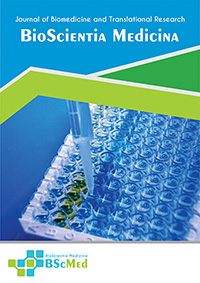Main Article Content
Abstract
Background: Acute leukemia is a significant global health concern, with increasing prevalence worldwide and in Indonesia. Accurate diagnosis and classification of acute leukemia subtypes, primarily acute lymphoblastic leukemia (ALL) and acute myeloblastic leukemia (AML), are crucial for effective treatment. Immunophenotyping and bone marrow aspiration (BMA) are commonly used diagnostic methods, each with its strengths and limitations. This study aimed to analyze the concordance between immunophenotyping and BMA in diagnosing and classifying acute leukemia in children.
Methods: A retrospective cross-sectional study was conducted on 46 children diagnosed with acute leukemia at Dr. M. Djamil General Hospital Padang from January 2022 to July 2023. Data were collected from medical records, including patient demographics, immunophenotyping results, and BMA findings. Concordance between the two diagnostic methods was analyzed using Fisher's exact test.
Results: The study population consisted of 30 (65.2%) males and 16 (34.8%) females, with a median age of 4 years. Immunophenotyping identified 24 (52.2%) cases as ALL and 22 (47.8%) as AML. BMA classified 26 (56.5%) cases as ALL and 20 (43.5%) as AML. There was a high concordance between the two methods, with only 2 (4.3%) cases showing discordant results. These two cases were classified as AML by immunophenotyping but as ALL by BMA.
Conclusion: Immunophenotyping and BMA demonstrate a high level of concordance in diagnosing and classifying acute leukemia in children. The few discordant cases highlight the importance of considering both methods, especially in challenging cases, to ensure accurate diagnosis and appropriate treatment.
Keywords
Article Details
As our aim is to disseminate original research article, hence the publishing right is a necessary one. The publishing right is needed in order to reach the agreement between the author and publisher. As the journal is fully open access, the authors will sign an exclusive license agreement.
The authors have the right to:
- Share their article in the same ways permitted to third parties under the relevant user license.
- Retain copyright, patent, trademark and other intellectual property rights including research data.
- Proper attribution and credit for the published work.
For the open access article, the publisher is granted to the following right.
- The non-exclusive right to publish the article and grant right to others.
- For the published article, the publisher applied for the Creative Commons Attribution-NonCommercial-ShareAlike 4.0 International License.





